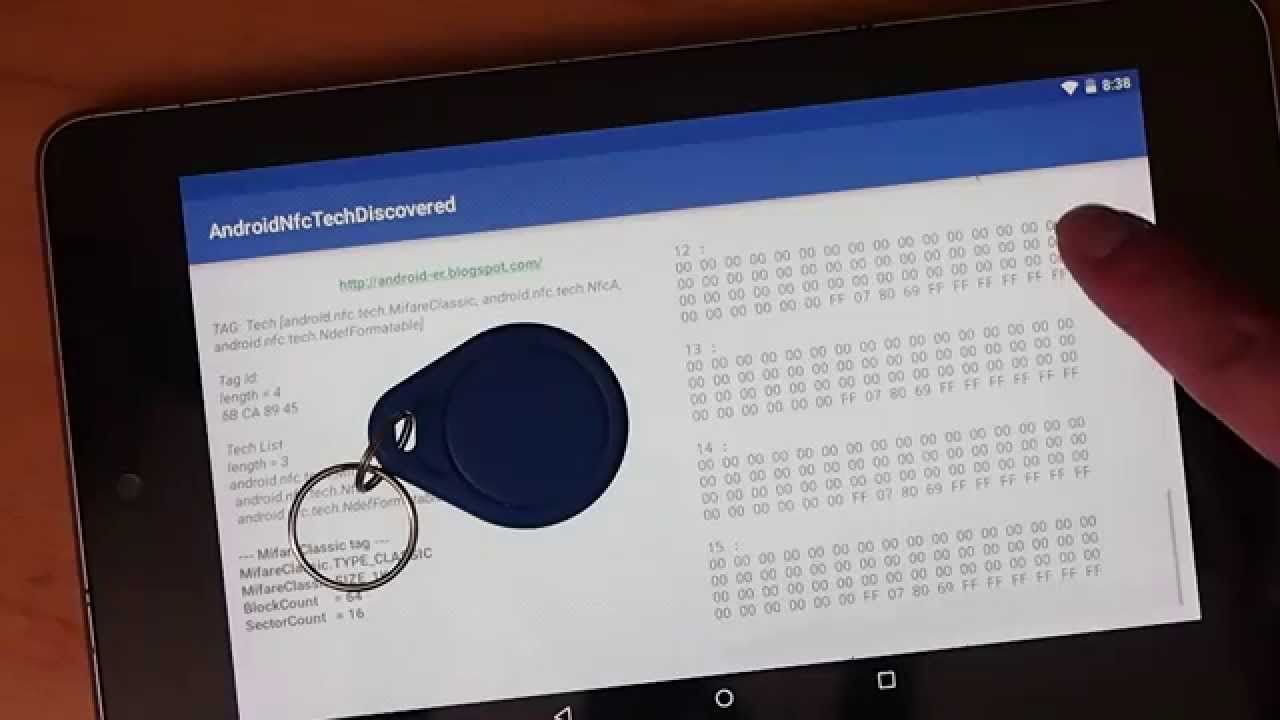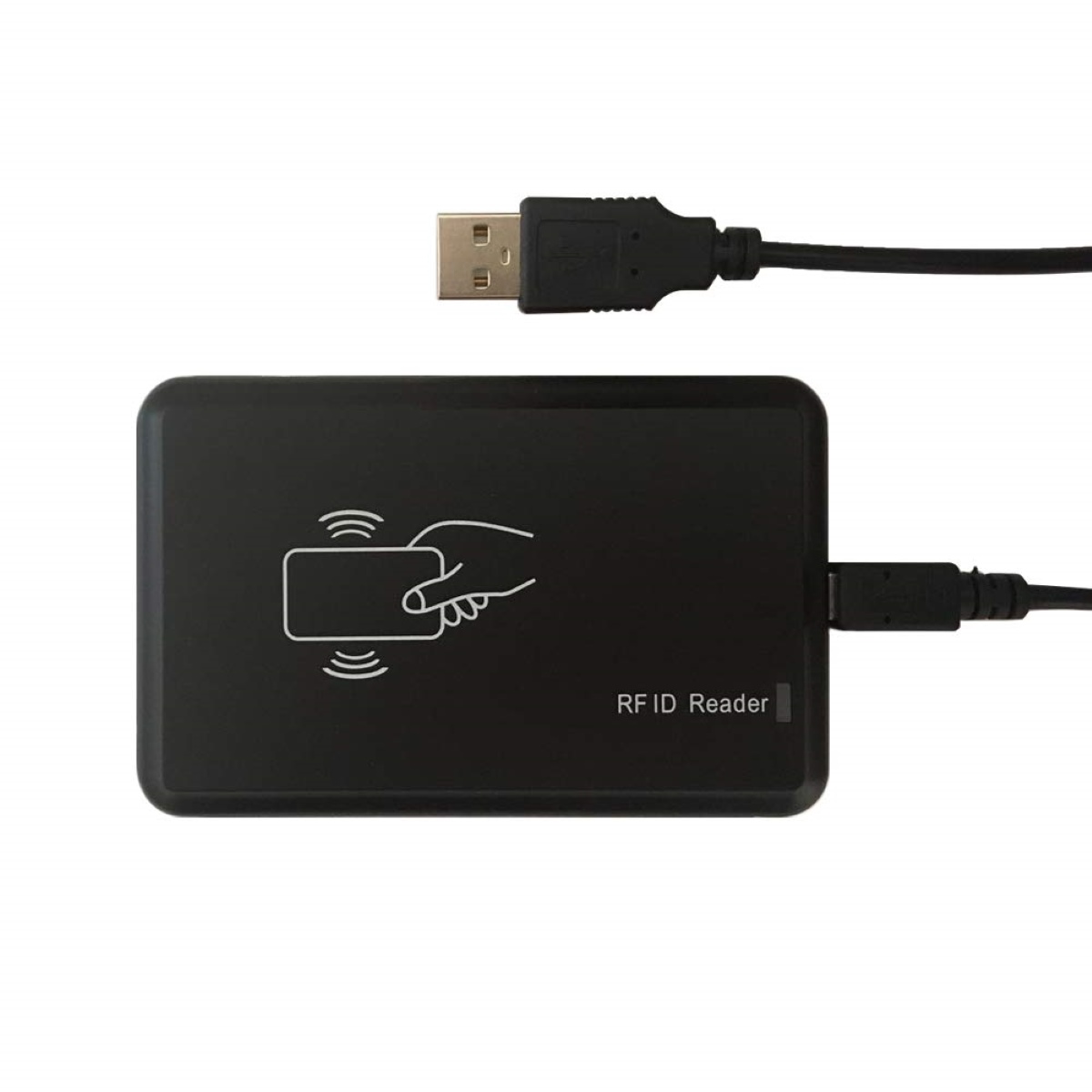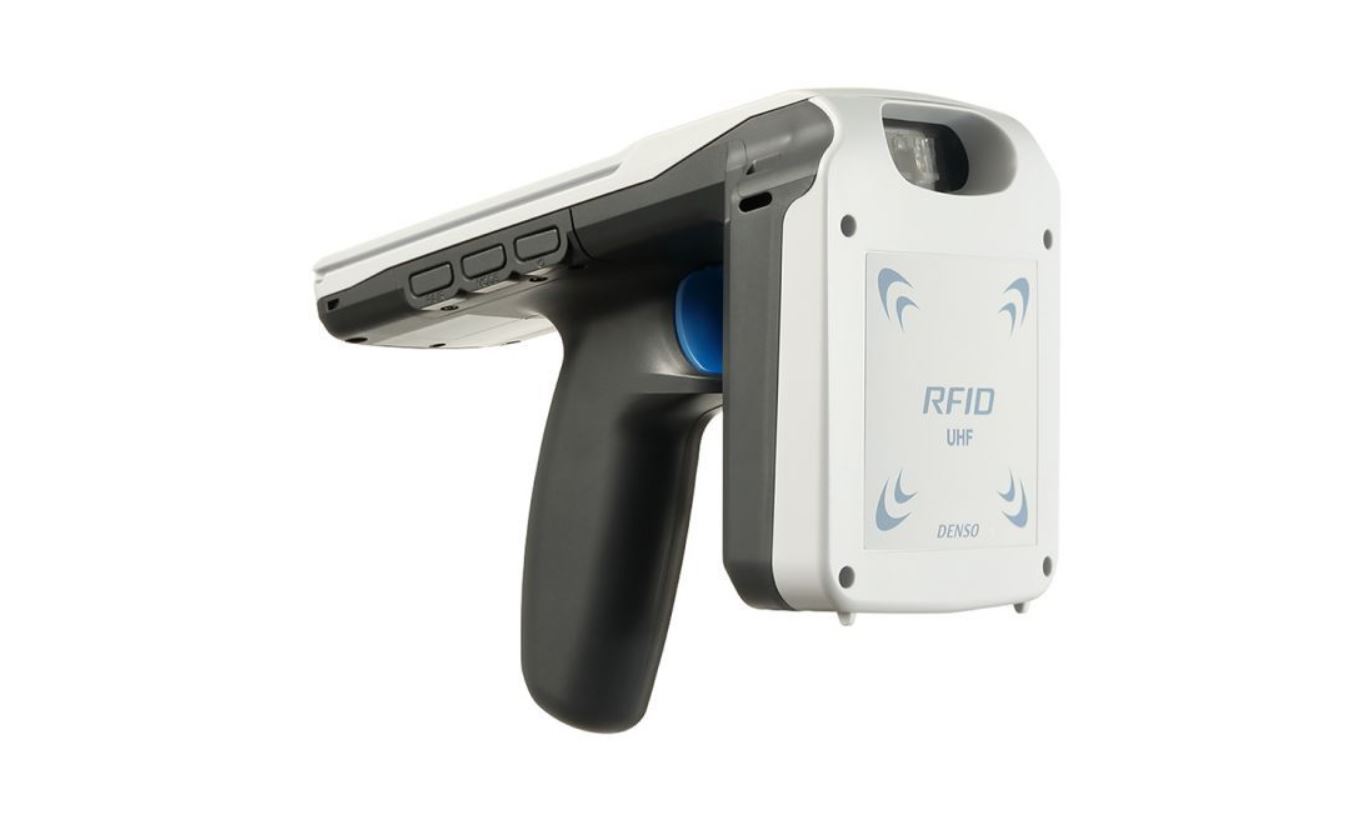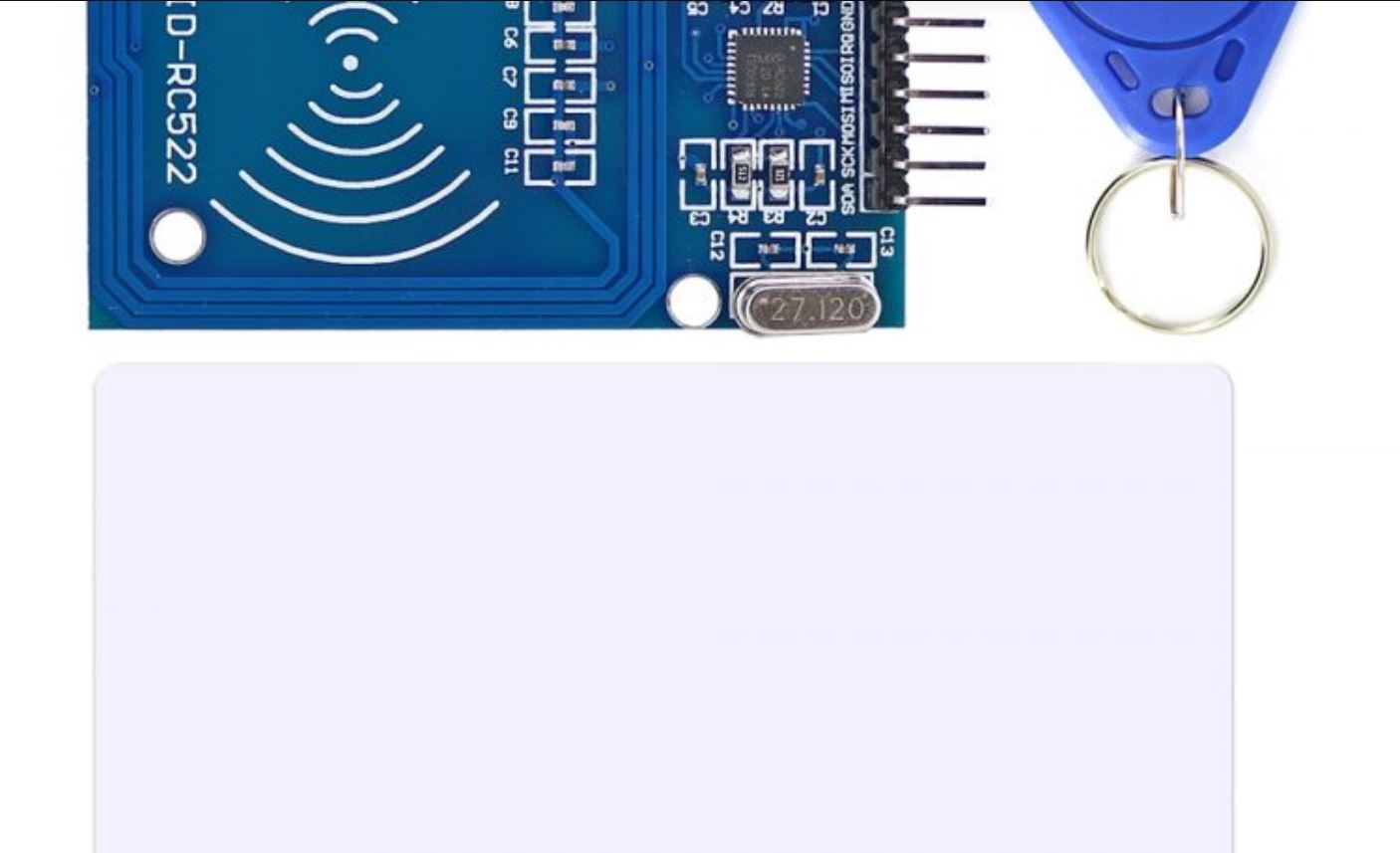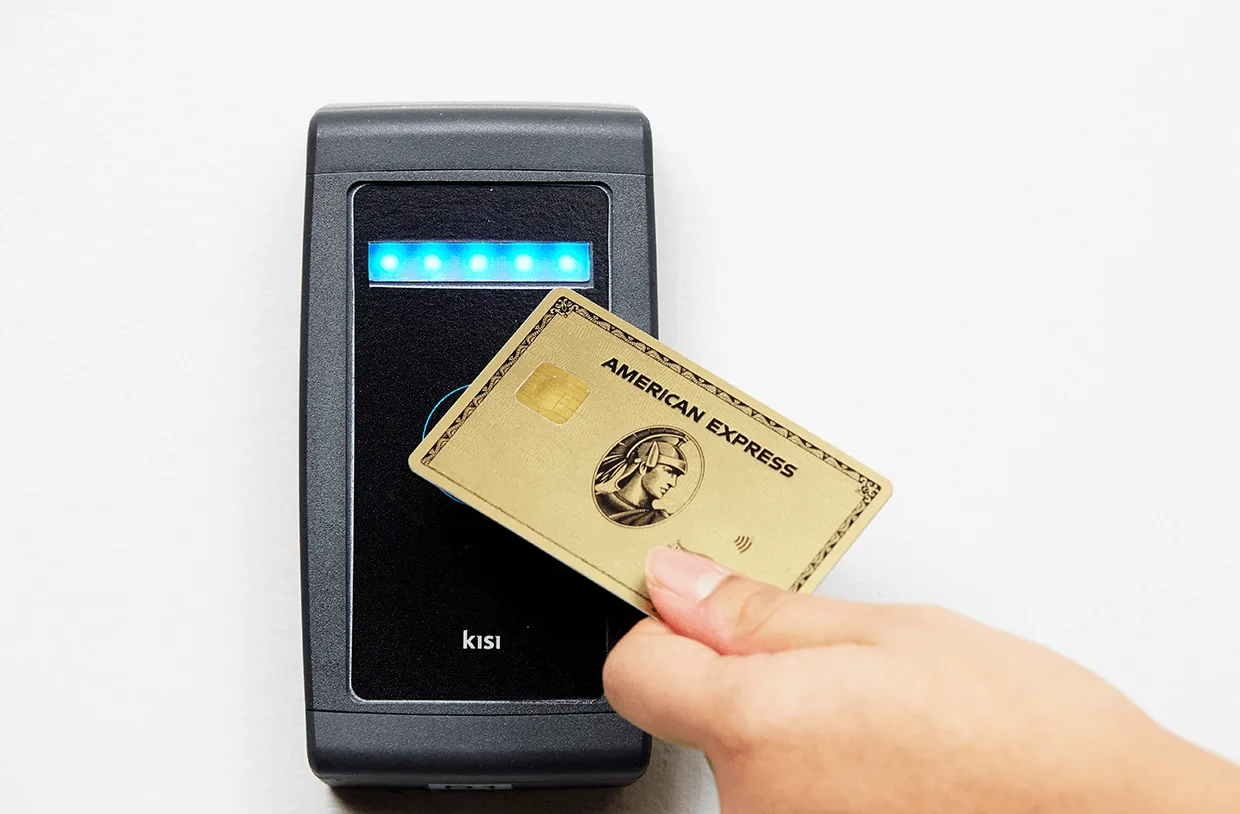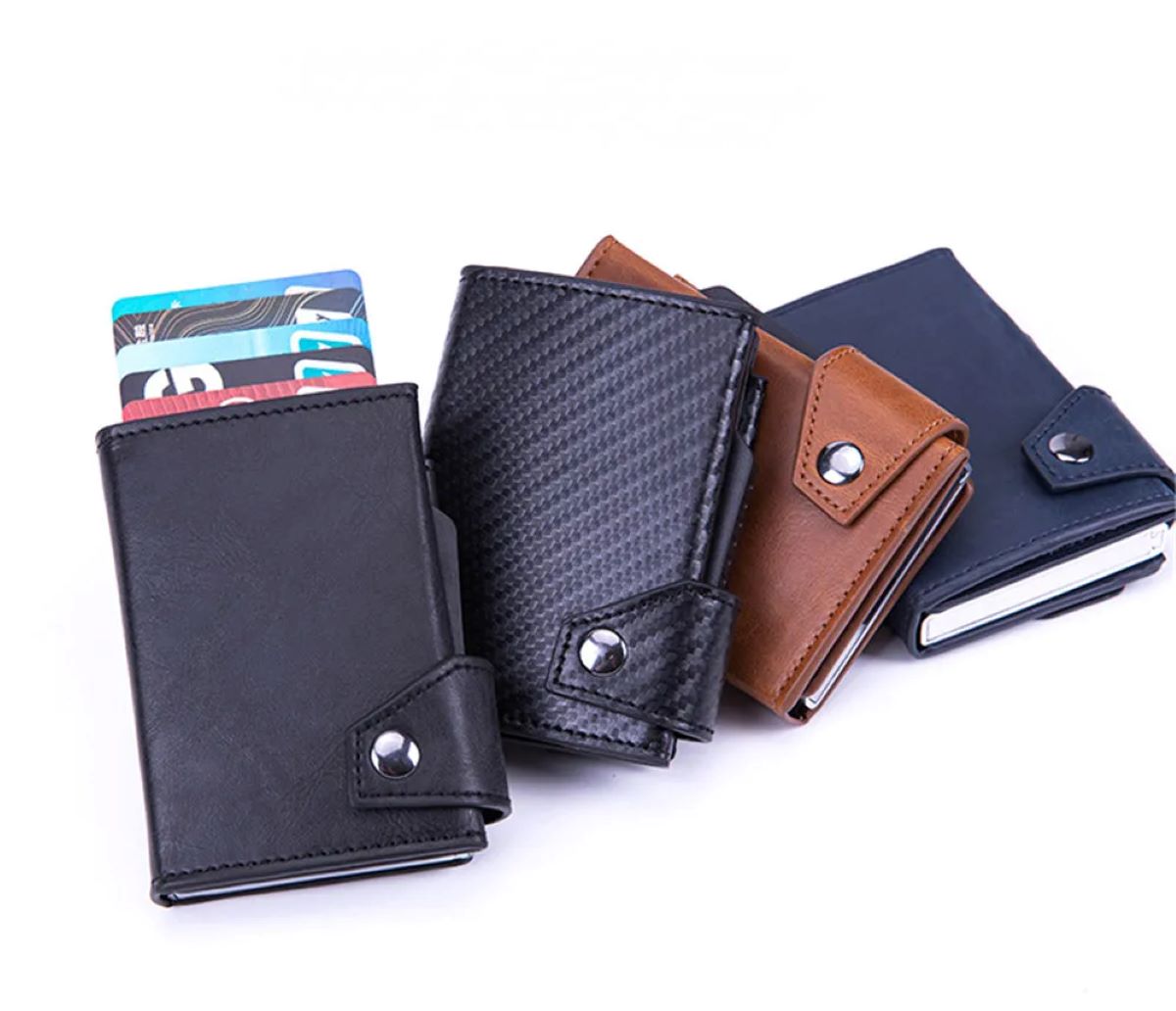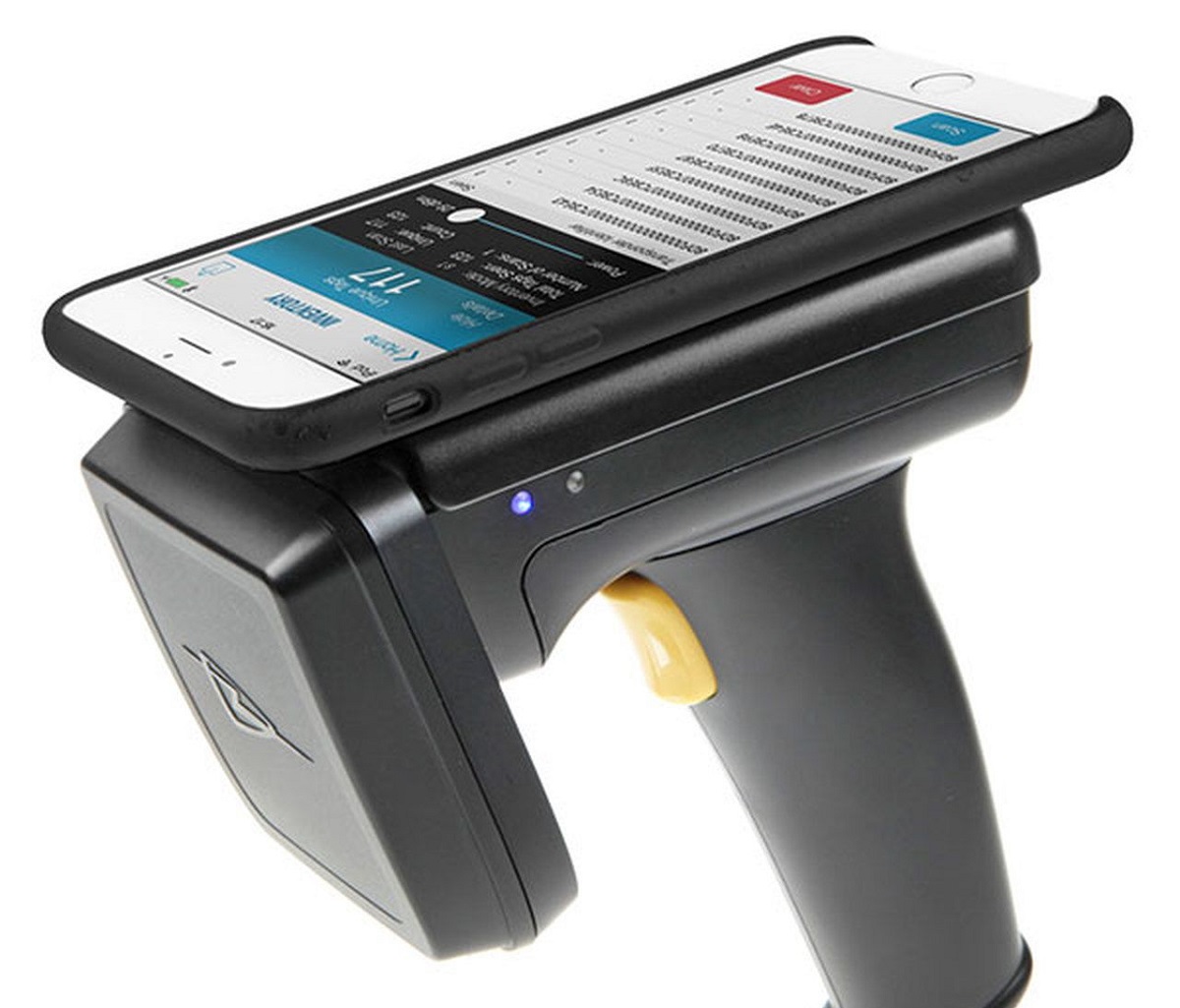Introduction
Welcome to this guide on how to read RFID tags with your Android device. RFID, or Radio Frequency Identification, is a technology that allows for the wireless identification and tracking of objects or individuals using electromagnetic fields. It has numerous applications in various industries, such as logistics, retail, and access control.
In this article, we will explore the basics of RFID technology, how RFID tags work, and how you can leverage your Android device to read RFID tags. Whether you’re a tech enthusiast, a business owner, or simply curious about this technology, this guide will provide you with the knowledge and tools you need to get started.
RFID tags are small, electronic devices that are embedded or attached to objects or individuals. These tags contain an integrated circuit and an antenna, which enable them to communicate with RFID readers via radio waves. When a RFID reader emits a radio signal, the RFID tag detects it and responds by transmitting its unique identifier or other relevant data. This data can then be processed and utilized for various purposes.
Nowadays, Android devices are equipped with the necessary hardware, such as NFC (Near Field Communication) and Bluetooth, that allows them to interact with RFID tags. With the right app and proper setup, your Android phone or tablet can serve as a portable RFID reader, opening up a world of possibilities.
In the next sections, we will walk you through the process of preparing your Android device for RFID reading, setting up the RFID reader app, and reading RFID tags. We will also discuss common troubleshooting issues and provide tips for better RFID reading. By the end of this guide, you’ll have the expertise to effectively read RFID tags using your Android device.
What is RFID?
RFID, which stands for Radio Frequency Identification, is a technology that uses electromagnetic fields to identify and track objects or individuals. It works by employing small electronic devices called RFID tags or transponders, which are attached or embedded in the items to be identified.
RFID tags consist of an integrated circuit chip and an antenna, which allows them to receive and transmit data wirelessly using radio frequency signals. These tags can be passive, active, or battery-assisted passive (BAP), depending on their power source and functionality.
Passive RFID tags do not have their own power source. Instead, they draw power from the radio waves emitted by RFID readers. When a reader’s signal reaches the tag, it energizes the tag, allowing it to respond by transmitting its unique identifier or data stored in its memory.
Active RFID tags, on the other hand, have their own power source, typically in the form of a battery. This allows them to actively broadcast their data to nearby RFID readers, increasing their range and reliability.
Battery-assisted passive (BAP) RFID tags combine the advantages of both passive and active tags. They have a small battery that assists in powering the tag, enabling a longer read range and better performance compared to passive tags.
RFID technology has become widely adopted in various industries due to its numerous benefits. It offers a non-line-of-sight identification method, meaning that RFID tags can be read even if they are not in the direct line of sight of the reader. This makes it ideal for scenarios where barcodes or QR codes would be impractical or inefficient.
In addition, RFID tags can be read at a much faster rate than traditional barcodes. Multiple tags can be read simultaneously, making it a suitable solution for inventory management, asset tracking, and supply chain logistics.
Moreover, RFID technology provides better accuracy and reliability. Unlike barcodes, which can be easily damaged or obscured, RFID tags can withstand harsh environments and can be read even if they are dirty, wet, or covered in a protective casing.
With its wide range of applications and benefits, RFID technology continues to revolutionize various industries, from retail and healthcare to transportation and security. By understanding the basics of RFID, you can harness its power and explore the vast opportunities it offers.
How do RFID tags work?
RFID tags, also known as transponders, operate through a process of emit-and-respond communication. They consist of an integrated circuit (IC) chip and an antenna that facilitate the transmission and reception of data wirelessly.
When an RFID reader emits a radio frequency (RF) signal, it energizes the RFID tag. The tag utilizes the energy from the incoming RF signal to power up its IC chip. Once powered, the tag responds by transmitting its unique identifier or other relevant data back to the reader.
The communication between the RFID reader and tag occurs through radio waves. The reader emits a specific frequency signal, which is received by the tag’s antenna. The antenna acts as a receiver, capturing the RF signal and converting it into energy to power the IC chip.
The IC chip, which is the brain of the RFID tag, contains various components such as memory for storing data, a modulator/demodulator for encoding and decoding signals, and a microcontroller for managing the tag’s functions.
When the IC chip receives power from the reader’s RF signal, it wakes up and begins the communication process. The tag then transmits its stored data or unique identifier back to the reader by modulating the received signal.
There are two types of RFID tag communication: passive and active.
In passive RFID communication, the tag relies solely on the energy from the reader’s RF signal to power its IC chip and transmit data. It does not have its own power source and remains dormant until it receives a signal. Passive RFID tags are generally smaller, cheaper, and have a shorter read range compared to active tags.
Active RFID communication, on the other hand, involves tags that have their own power source, usually in the form of a battery. Active tags can independently transmit signals to the reader, allowing for longer read ranges and more reliable communication. These tags are often used in applications that require real-time tracking or monitoring.
RFID tags can be read from varying distances, depending on the strength of the reader’s signal and the capabilities of the tag. Some tags have a short read range of a few centimeters, while others can be read from several meters away.
Overall, RFID technology offers a seamless and efficient method of identifying and tracking items. By understanding how RFID tags work, you can harness their potential and leverage them for a wide range of applications in different industries.
Preparing your Android device for RFID reading
Before you can start reading RFID tags with your Android device, there are a few steps you need to take to ensure compatibility and functionality. Here’s what you need to do to prepare your Android device for RFID reading:
1. Check for NFC support: Near Field Communication (NFC) is a key technology for RFID reading on Android devices. To use RFID reading capabilities, your Android device must have NFC support. You can check if your device supports NFC by going to the settings menu and looking for an NFC option. If it’s not present, your device may not support NFC, and you might need to consider alternative options.
2. Enable NFC: If your Android device supports NFC, ensure that it is enabled. Go to the settings menu, locate the NFC option, and toggle it on. This will activate the NFC chip in your device, allowing it to communicate with RFID tags.
3. Install a compatible RFID reader app: To read RFID tags, you’ll need to download and install a suitable RFID reader app from the Google Play Store. There are several options available, so be sure to choose one that is compatible with your device and meets your specific requirements. Look for apps that support NFC and offer features such as tag identification and data retrieval.
4. Grant necessary permissions: When you install an RFID reader app, it may require certain permissions to access your device’s NFC functionality. Make sure to grant the necessary permissions for the app to function properly. These permissions typically include accessing NFC, storage, and sometimes camera or location services, depending on the app’s features.
5. Ensure proper positioning: To read RFID tags effectively, ensure that your Android device’s NFC antenna and the RFID tag come into close proximity. The NFC antenna is usually located near the top or back of the device, so position the tag accordingly to enable successful communication.
By following these steps, you can prepare your Android device to read RFID tags. Once you have completed these preparations, you will be ready to move on to setting up the RFID reader app and start discovering the world of RFID reading capabilities on your Android device.
Setting up the RFID reader app
Once you have prepared your Android device for RFID reading, the next step is to set up the RFID reader app. Here’s a guide to help you get started:
1. Choose a suitable RFID reader app: As mentioned earlier, there are various RFID reader apps available on the Google Play Store. Choose an app that aligns with your requirements and supports the features you need, such as tag identification, data retrieval, and integration with other systems.
2. Download and install the app: Head to the Google Play Store on your Android device and search for the RFID reader app you have chosen. Tap on the app to access its download page, then click the “Install” button to download and install it on your device.
3. Launch the app: Once the installation is complete, locate the app on your device and tap its icon to launch it. The app may prompt you to grant necessary permissions, such as accessing NFC or storage. Follow the on-screen instructions and grant the required permissions for the app to function properly.
4. Familiarize yourself with the app’s features: Take some time to explore the RFID reader app and familiarize yourself with its various features. Depending on the app you have chosen, you may have options to customize settings, enable different reading modes, or connect to external devices for enhanced functionality.
5. Test the RFID reader functionality: To ensure that the RFID reader app is working correctly, you can perform a test by bringing an RFID tag in close proximity to your Android device’s NFC antenna. Follow the app’s instructions to initiate the tag reading process and verify that the app can successfully detect and retrieve data from the tag.
6. Configure additional settings (if necessary): Depending on your specific use case, you may need to configure additional settings in the app. This includes adjusting reading range, selecting specific tag types, or enabling additional features like data encryption or filtering options. Consult the app’s documentation or seek assistance from the app’s support for guidance on configuring these settings.
By following these steps, you can effectively set up the RFID reader app on your Android device. Once you have completed the setup process, you’ll be ready to start reading RFID tags and unlocking the full potential of RFID technology with your Android device.
Reading RFID tags with your Android device
Now that you have prepared your Android device and set up the RFID reader app, it’s time to dive into reading RFID tags. Here’s a step-by-step guide to help you get started:
1. Open the RFID reader app: Locate the RFID reader app on your Android device and tap on its icon to open it. The app should launch and display its main interface, ready for tag reading.
2. Position the RFID tag: Place the RFID tag within close proximity to your Android device’s NFC antenna. The exact location of the NFC antenna may vary depending on the device model, so refer to your device’s manual or documentation to identify the NFC antenna’s location.
3. Initiate the tag reading process: In the RFID reader app, look for a button or option that allows you to initiate the tag reading process. This could be a “Scan” button or an option in the app’s main menu. Tap on the appropriate button to start scanning for RFID tags.
4. Wait for the tag detection: Once you have initiated the tag reading process, patiently wait for the app to detect and read the RFID tag. Depending on the app’s settings and the tag’s proximity, this process may take a few seconds.
5. View the tag information: Once the app successfully detects and reads the RFID tag, it will display the tag information on the screen. This may include the unique identifier of the tag, any stored data or attributes associated with the tag, or other relevant information depending on the tag’s specifications.
6. Take necessary actions: Based on the tag information displayed by the app, you can take the necessary actions as per your requirements. This could involve logging the tag data, saving it to a database, triggering specific events or workflows, or performing any other tasks that are relevant to your use case.
7. Repeat the process for multiple tags: If you have multiple RFID tags to read, simply repeat the above steps for each tag. The RFID reader app should be able to handle sequential tag reading and display the information accordingly.
Remember to maintain the proper positioning and proximity between the RFID tag and your Android device’s NFC antenna during the reading process. This will ensure accurate tag detection and reliable data retrieval.
Experiment with different settings and features in the RFID reader app to optimize your RFID reading experience. Some apps may offer options to filter specific tag types, adjust reading range, or enable additional functionalities that can enhance your overall experience.
By following these steps and utilizing the capabilities of the RFID reader app, you can effectively read RFID tags with your Android device and unlock the potential of RFID technology for your specific needs.
Troubleshooting common issues
While reading RFID tags with your Android device, you may encounter some common issues that can affect the reading process. Here are a few troubleshooting tips to help you overcome these issues:
1. Insufficient tag detection: If the RFID reader app is not detecting RFID tags properly, ensure that you are positioning the tag within close proximity to the Android device’s NFC antenna. Make sure there are no obstructions or interference between the tag and the device that could weaken the signal.
2. App compatibility issues: If you are experiencing compatibility issues with the RFID reader app, check for app updates or consider trying a different app. Some apps may work better with specific Android device models or have better compatibility with certain tag types.
3. Weak NFC signal: If the NFC signal is weak, it can hinder tag detection. Make sure that NFC is enabled on your Android device and that there are no software or hardware issues affecting the NFC functionality. You can also try restarting your device to reset the NFC settings.
4. Tag orientation: Some RFID tags have specific orientation requirements for effective reading. Experiment with different tag orientations (e.g., facing the tag directly, angling the tag, etc.) to find the optimal position for reliable tag detection.
5. Interference from other devices: Other electronic devices emitting electromagnetic waves can interfere with RFID tag reading. Try to perform tag reading in areas with minimal interference or move away from other electronic devices during the reading process.
6. Tag compatibility: RFID tags come in different frequencies (e.g., low frequency, high frequency, ultra-high frequency) and protocols (e.g., ISO 14443, ISO 15693). Ensure that the RFID reader app and your Android device support the specific frequency and protocol of the tags you are attempting to read.
7. Power and battery issues: If you are using active RFID tags, ensure that the tags have sufficient power. For battery-assisted passive (BAP) tags, make sure the battery is not drained. For your Android device, ensure that it has enough battery power to support NFC and RFID reading without interruption.
If these troubleshooting tips do not resolve the issues you are facing, consult the documentation or support resources provided by the RFID reader app or consider seeking assistance from the app’s support team. They can provide further guidance and assistance in resolving specific issues you may encounter during the RFID tag reading process.
Remember to keep your Android device and the RFID reader app up to date with the latest software versions, as updates often include bug fixes and performance improvements that can help address common issues and enhance the overall functionality of RFID reading.
Tips for better RFID reading
To optimize your RFID reading experience with your Android device, consider implementing the following tips:
1. Choose the right RFID tags: Different RFID tags are designed for specific purposes and environments. Select tags that are suitable for your intended application and ensure they are compatible with the RFID reader app and your Android device. This will ensure better performance and accurate data retrieval.
2. Maintain proper positioning: Place the RFID tag in close proximity to the NFC antenna of your Android device. Keep the tag and the device aligned properly for optimal signal strength and reliable tag detection. Experiment with tag orientation to find the best position that maximizes reading efficiency.
3. Minimize interference: Keep the reading environment free from electromagnetic interference. Steer clear of other electronic devices that emit radio frequency signals, as they can disrupt RFID tag reading. Additionally, avoid metal objects or surfaces that can reflect or absorb RF signals, as they can affect tag detection.
4. Optimize reading range: Some RFID reader apps allow you to adjust the reading range. If possible, fine-tune the range settings to match the distance at which you need to read the tags. This can reduce the chance of unintended tag readings and improve overall reading efficiency.
5. Ensure tag compatibility: Verify that the RFID reader app and your Android device support the specific RFID tag technology you are using. Different tags operate at different frequencies and protocols, so make sure they are compatible with the app and device to ensure successful reading.
6. Use single-tag mode: If you are reading one tag at a time, use the single-tag mode in the RFID reader app. This can help minimize the chances of accidental tag readings and prevent confusion, especially in crowded or noisy environments.
7. Keep tags clean and undamaged: RFID tags can become less effective if they are dirty, wet, or damaged. Regularly clean the tags using appropriate cleaning methods and handle them with care to avoid physical damage. This will ensure reliable tag detection and accurate data retrieval.
8. Test in different environments: If you plan to use RFID tags in various environments, conduct tests in those environments to ensure consistent and reliable reading. Factors such as temperature, humidity, and physical obstructions can impact tag reading performance, so it’s essential to verify functionality in different scenarios.
9. Stay updated: Keep your RFID reader app and Android device up to date with the latest software versions. App and system updates often include bug fixes, performance improvements, and new features that can enhance RFID reading capabilities.
10. Seek professional assistance: If you encounter persistent issues or require advanced functionalities, consider seeking professional assistance or consulting an expert in RFID technology. They can provide guidance tailored to your specific requirements and help you optimize your RFID reading setup.
By following these tips, you can improve the efficiency and accuracy of RFID tag reading with your Android device. Whether you are tracking inventory, managing assets, or implementing access control, these strategies can help you make the most of RFID technology and enhance your overall RFID reading experience.
Conclusion
Reading RFID tags with your Android device opens up a world of possibilities in various industries and applications. By understanding the fundamentals of RFID technology, preparing your Android device, setting up the RFID reader app, and implementing best practices, you can effectively read RFID tags and harness the power of this technology.
RFID technology, with its ability to wirelessly identify and track objects or individuals, offers a seamless and efficient method of data collection and management. Whether you are in logistics, retail, healthcare, or any other industry that requires asset tracking or inventory management, RFID can greatly streamline your operations and provide accurate and real-time data.
Throughout this guide, we have covered the importance of prepping your Android device for RFID reading by enabling NFC and selecting a suitable RFID reader app. We have also provided troubleshooting tips and shared strategies for optimal tag reading performance.
It’s worth mentioning that RFID technology continues to evolve, with advancements in tag design, reading range, and compatibility. Staying updated with the latest trends and technologies in RFID will ensure that you are able to leverage its benefits to the fullest.
Remember, RFID technology is a powerful tool, but its effectiveness relies on proper implementation and understanding. By following the steps outlined in this guide and utilizing best practices, you can leverage your Android device as a portable RFID reader, expanding your capabilities and enhancing your productivity.
So, take advantage of the opportunities that RFID technology offers, experiment with different tags and settings, and explore how it can revolutionize your business or personal needs. Embrace the power of RFID reading with your Android device and unlock the potential of efficient and accurate data collection.







